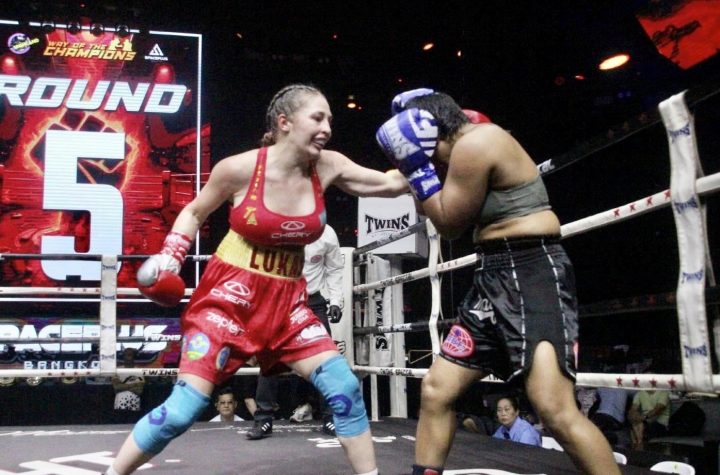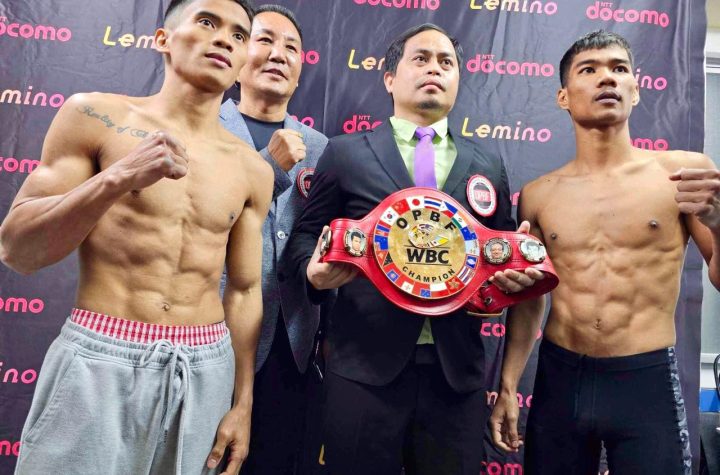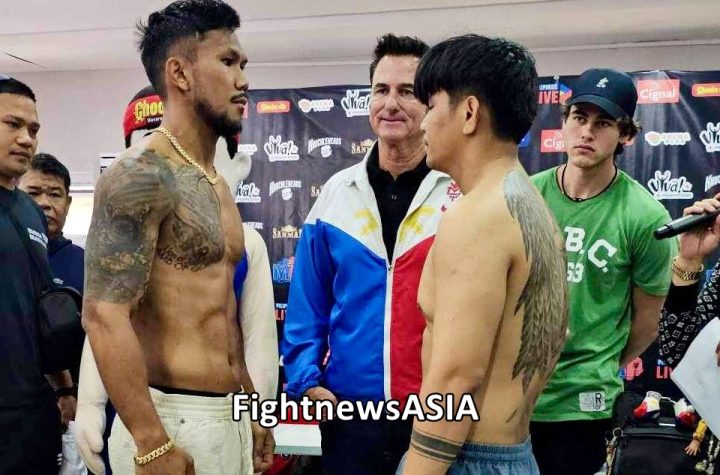
MMAfighting.com
In September, when Miyuu Yamamoto told her brother, the legendary Norifumi “Kid” Yamamoto, that she had a fight lined up at Rizin 13 at the end of the month, she was hoping that would bolster his spirits. Instead, it was right around then that he began to slip away. He had made it public only a couple of weeks earlier that he had been battling stomach cancer, and everything was happening so fast. Too fast for anybody close to him to wrap their minds around. There was still optimism that he would beat it in early September. Among those who believed was Miyuu, who grew up worshiping Kid. Even though Norifumi hadn’t stepped in the cage in over two years, she still harbored hope that one day they’d fight on the same card together.
Just two weeks later, 12 days before Miyuu was to fight Andy Nguyen in her sixth pro MMA bout, he passed away. In the middle of all the tributes being paid to her brother — the Japanese cult hero who took out Caol Uno and Royler Gracie in the same night, who broke a record by knocking out Kazuyuki Miyata in four seconds with a flying knee at Hero’s 5 — Miyuu had to decide whether or not to fight. Whether to crumble inwards, or keep going. She later said that backing out was never an option, remembering that just three days after their own mother died Kid went out and won the college national wrestling tournament. She could hear his voice urging her on, even if it was no longer in the room.
“I thought he’d tell me to quit if I didn’t fight that fight,” she said.
So for the next week and a half, Miyuu did what she had to and showed up in Saitama to fight Nguyen. She wasn’t able to dominate the fight as she’d hoped, nor land a submission that she suspected she could. Instead she won a workmanlike decision in which she found herself somewhat tentative on offense, all while hearing, in her own mind, her brother’s disappointment for having jettisoned the game plan. It was a stoical showing under the circumstances right up to the final bell. She held it in until that bell sounded.
That’s when it hit her.
Covering her eyes with her gloved hand and with her pink hair spilling over the canvas, she began to cry almost instantaneously. Not just cry, but wail from the depths of her being. It was the cry of mourning. The cry of somebody who couldn’t skirt the emotional wilderness a second longer, who was being overcome by the gravity of everything she temporarily denied.
She got confused, and wanted to hug her brother, to tell him she won for him — to confide in the one person she couldn’t. But it dawned on her, again, for the first time — again — that “he was no longer there.” She was dazed. When she hugged Andy, her opponent, she could only stammer that exact thing, because it was too much to keep in. “He’s no longer here,” she said. Andy, who had just lost the fight, replied the only consoling thing a person can in moment like that.
“It’s okay,” she said. “He’s watching from above.”
:no_upscale()/cdn.vox-cdn.com/uploads/chorus_asset/file/13645575/Miyuu_Yamamoto_3.jpeg)
Three months later, the 44-year old Miyuu is ready to make her return to the Rizin ring, this time for a fight against Mika Nagano at the big New Year’s card. In the intervening months she has begun picking up the pieces. She will once again walk out to Kid’s famous entrance song, “I Believe,” and once again hold back the tears as she does. She won’t be alone.
Her son, the 22-year old Erson Yamamoto, is fighting on the same card against Kazuyuki Miyata. He will be there. As will Kid’s wife, Yui, and Kid’s children. Competing is in the blood, and it’s what the family knows. Miyuu, herself a decorated three-time world champion wrestler, was named after Munich, the city her father Ikuei competed in back in 1972 Olympic games. Competing is the Yamamoto spirit, which makes it a natural cure for grief. And she can still hear Kid’s voice whenever she does something she knows she shouldn’t.
In fact, it heartens her to think that Kid — her brother, her coach, her idol — would have criticized her for the way she fought against Nguyen.
“He’d say my performance was bad because I didn’t listen to his advice,” she says. “I still feel like I’m listening to what he says. God, I’m still scared, he’s going to kick my ass, I’m scared he’s watching over me and he’ll yell at me.”
She’s laughing as she says this. She can do that now, because it also heartens her to think he is with her, even if it’s just in spirit. Before Norifumi’s passing, Miyuu moved from her home base in Toronto to the island of Guam, where Kid was living (and where he passed away). When distance kept her and Kid apart — or when he was physically strong enough to coach her — he would send her videos to help train her, little items for her to work on or keep in mind. Even though she had 30 years of scaffolding from wearing a singlet, Kid was essentially her MMA conscience.
“It’s been really tough,” she says. “My brother’s not around anymore. At that time [of my last fight] I still couldn’t believe he was gone. It was weird. I was sad, but maybe 90 percent of the day I’d believe he was just off somewhere, and I wasn’t sad. I couldn’t accept that he was gone.”
Miyuu began wrestling at the age of nine in Japan, and by 1991 won her first gold medal at the World Wrestling Championships in Tokyo. She duplicated that feat in 1994 in Sofia, and then again in 1995 in Moscow. Her ultimate goal was to compete in the Olympic Games, just like her father, to live up to her name. That dream stayed with her a long time.
But it wasn’t to be. Women’s wrestling wasn’t introduced to the Olympic games until 2004, by which time Miyuu was nearly 30 years old. She made a bid to make the team, but ultimately fell short. She tried again in 2012, and the same thing — she lost in the second round of the All Japan Selection Championship. Four years later, after relocating to Ontario, she tried one more time at 42 years old as a representative of Canada. When she didn’t make it, she gave into her other calling, another one which was synonymous with the Yamamoto name.
Mixed martial arts.
The same sport her brother had ascended to the level of rock star in through the early-to-mid aughts in Japan. He was the legend under the Shooto and Heros banners. From 2002-2007 he went on one of the more memorable runs in MMA history, going 14-0 with 12 finishes. When he took on Masato in a kickboxing match at the end of 2004, it was a national event. Over 34 millions viewers tuned in. He was one of the very best, most transcendent stars in early days of mixed martial arts — a true Japanese warrior, with more than enough cache to thoroughly win over MMA diehards in America, too.“I’ll be very aggressive, like my brother,” Miyuu says. “I want to be Kid. I just want to be just like him.”
He had been teaching his big sister Miyuu in earnest when he fell sick. He wanted to help her make the late transition into MMA, where for so long the name Kid Yamamoto carried an almost portentous feeling.
“I guess I’m not a quick learner, because he wanted to teach me so much stuff,” Miyuu says. “He did teach me a little bit of his knowledge and skills. Still, he gave me a lot of stuff that I needed. He was my best friend. He sent me a lot of videos and Instagrams, watch and learn and try to do this move, trying to help me. Even when he was having a hard time.”
Heading into her next fight with Nagano, Miyuu is training with Kyle Aguon — Kid’s longtime coach and friend — in Guam. “He’s a game changer,” Miyuu says. “He’s a very smart teacher.” And even in her mid-40s, Miyuu has the spry feeling of possibility, the kind of feeling that comes with just starting out on a new adventure. She says she doesn’t know how long she’ll fight — “I’m having so much fun, I’m just going to continue on until I say okay, that’s enough” — or how far she can take it.
The truth is, it doesn’t matter. What matters is she goes out and does it, for herself, for her father and family, for her late brother. Her game plan is a personal one; she wants to emulate the greatest inspiration she’s known.
“I’ll be very aggressive, like my brother,” she says. “I want to be Kid. I just want to be just like him.”
Two years into her MMA career, Yamamoto has made baby steps towards becoming a better mixed martial artist. Her new career, the one she fashioned after the Kid himself, is like a rebirth after a life on the wrestling mats. There aren’t any expectations other than to go out and try to do something extraordinary, even if that means just surprising herself.
:no_upscale()/cdn.vox-cdn.com/uploads/chorus_asset/file/13645574/Miyuu_Yamamoto_2.jpg)
“I’m getting better everyday, little by little,” she says. “There’s progress. But still, compared to other older, great fighters, I’m still a baby. I want to try and keep fighting, just keep fighting and fighting like I did when I was a wrestler, doing tournament after tournament.”
She knows that Nagano’s a good grappler, and is well aware of her own vulnerabilities in that department, having succumbed twice already to armbars. She realizes the absurdity of launching into a career in her 40s, but has a different point of view. She does so because she can, and because she’s born to it. Besides, she has plenty of fight left in her, and new inspirations come to light all the time.
“This time my entrance will be for his family,” Miyuu says. “Especially for Nori’s wife, Yui, who has been suffering and she’s still having a hard time. They were really tight, 24 hours a day.”
This time, when Miyuu makes the walk in Saitama, she has her bearings. She believes that Kid Yamamoto is there. He’s right there with her. He is part of her, just as he’s part of Yui and his children, and Erson, and everybody in the family. They are all where they are because of Kid, and he’ll be ringside in one form or another — in the sound of the bell, in the dimples of every grin, in the spirit of the fight game.
“When I get in the ring and I’m fighting, I don’t think I have an issue with being emotional,” she says. “But right after that last fight, that’s when it hit me. Right after I won the last fight, it all came out.”
That moment, so filled with love and yearning and grief, communicated everything you need to know about the bond between the man they called the “Kid,” and the sister who still fights on.





More News
Jafarov, Lukas, Purcell Win
Fajardo, Simri Make Weight
Charr, Pulev, Lambert in Bulgaria